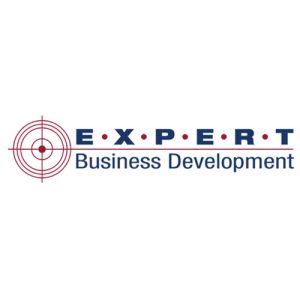For the last 20 years or more, banks of all stripes have been encouraging their commercial bankers to break out of the mindset that they are purely commercial lenders and to work with business customers more holistically.
This process was hastened by two industry developments. Firstly, the financial crisis of 2008-2009, partially in response to regulators’ concerns, there was a push to deconcentrate in commercial real estate (CRE) within customer portfolios. Second, the SVB/Signature/First Republic meltdowns in 2023 created a deposit crisis as core commercial deposits left the banking system at the same time as the glut of PPP funds worked their way through and out of many banks.
What’s In a Name?: The first thing that many banks did to address this issue was to change the title of their commercial bankers from “Lenders” to “Relationship Managers” (RMs) or something close thereto. This symbolic gesture did little to change behavior or self-perception, and the bankers still think of and call themselves lenders.
Culture Eats Strategy for Breakfast: No matter what they are called, it is how they see themselves that is paramount. Self-perception can be enormously important in creating behavior. The annals of business history are strewn with examples of industry-leading companies that almost faded into oblivion because they never quite figured out what business they were in. Examples are:
- The Pennsylvania Railroad thought it was in the railroad business rather than the transportation business.
- The Saturday Evening Post thought it was in the magazine business rather than the advertising business.
- Kodak thought it was in the film business rather than the imaging business.
No matter what the strategy or how much authority is put behind its implementation, culture virtually always prevails. The classic example of this phenomenon is the fact that, despite the outcome of the Civil War and the passage of the 13th, 14th and 15th Amendments, reconstruction in the South was a miserable failure. It took another 100 years to achieve even a semblance of racial equality thanks to cultural resistance.
For the successful commercial banker today, the primary mission should be to help their customers grow and be successful. That success will likely depend on a variety of banking services including loans, deposits, payments, treasury services and, depending on the bank’s offerings, insurance and investment products.
Building a Better Banker — The Holistic Approach: It’s essential for commercial bankers to have at least a working knowledge of the breadth of products that the bank offers. Because we know that loans are usually the lead product in a banking relationship, lending expertise is important but far from the only priority.
Training should include direct questions to ask when meeting with the prospect. For instance, an effective question is, “You probably know what your borrowing interest rate is, but do you know what you’re paying in fees each month for cash management services?” The typical business owner/controller/CFO is often clueless when this question is posed.
Targeting Wisely: Most commercial bankers have a deep knowledge of the traditional industries that produce the bulk of C&I deals, manufacturing, wholesale and business services. When it comes to mining deposits, however, mother lodes are often found in those industries that are deposit-rich, often to the exclusion of any lending relationship. Topping the list are property management, title companies, homeowners’ associations, attorneys, education, not-for-profits and municipalities. Many C&I bankers have neither the industry knowledge nor the contacts in these highly productive industries.
One of the real silver linings of the COVID-19 pandemic is the availability of PPP loan data. While the SBA makes this data available at no charge, it requires significant improvement. The only data points that the SBA provides are borrower, lender, industry and loan size. The data needs to be enriched by appending the other information essential to wage a business development campaign.
In the past, the only way to target a particular competitor that was being acquired or in some other way stumbling was to obtain UCC filings for that secured party. With no significant lending relationship, there would often not be a UCC, so adding PPP data to the mix has proved a tremendous benefit, especially when targeting deposits.
Differentiation — The Keys to the Kingdom: At the end of the day, every prospect has to be able to answer the same question: “Why should I endure the pain (real or perceived) of switching banks?” The decision has to come down to a very simple concept. The prospect has to believe that he or she will be measurably better off with your bank than with the incumbent. This brings us back full circle to the questions that every banker should be able to answer:
- What are you going to do to help my business flourish?
- How important will I be to you and your bank?
- If I have a problem or need an issue addressed quickly, who would I call?
- How available will they be?
- Will they have the motivation and authority to address my issue in a timely manner?
What Matters Motivates: Our firm has spent the last 31 years helping commercial bankers get in front of decision-makers (owners and CFOs) who are open to exploring an alternative or supplemental banking relationship. While rates and fees are always an issue, by far the greatest motivator, based on thousands of conversations, is the relationship. Unless you’re dealing with a large corporate client where a few basis points can make a big difference, many of these decision-makers tell us that what they appreciate is a banking partner that can answer the five questions above as they would want them answered.
As many community and regional banks are making investments in infrastructure, technology and more appealing solutions for their commercial customers, perhaps the most direct and cost-effective path to commercial growth is developing and fine-tuning the relationship-building skills of their sales team. By helping and encouraging your sales team to focus on creating customer success, the path from “lender” to “leader” may be as easy as swapping out a letter.








